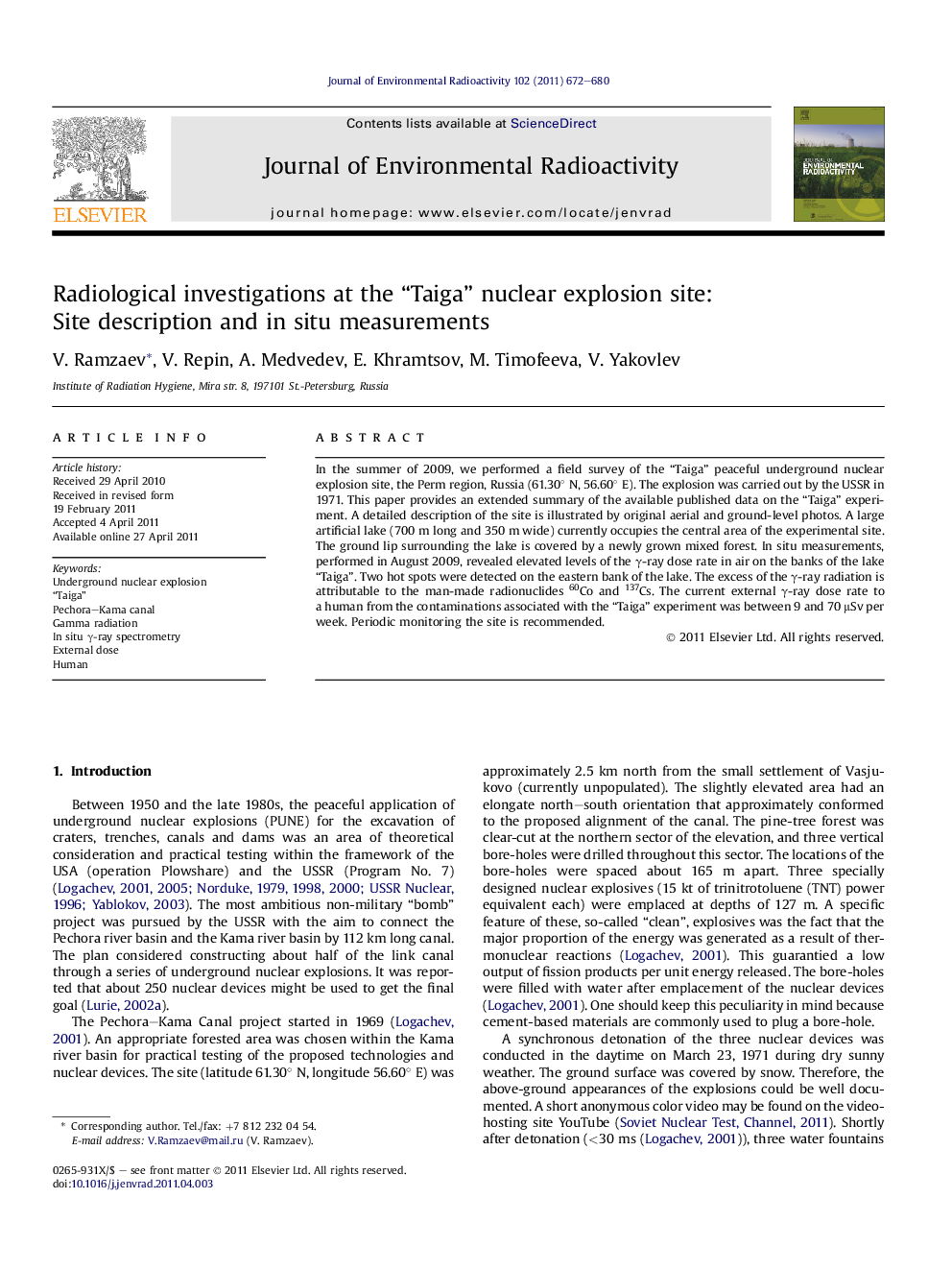| Article ID | Journal | Published Year | Pages | File Type |
|---|---|---|---|---|
| 1738655 | Journal of Environmental Radioactivity | 2011 | 9 Pages |
In the summer of 2009, we performed a field survey of the “Taiga” peaceful underground nuclear explosion site, the Perm region, Russia (61.30° N, 56.60° E). The explosion was carried out by the USSR in 1971. This paper provides an extended summary of the available published data on the “Taiga” experiment. A detailed description of the site is illustrated by original aerial and ground-level photos. A large artificial lake (700 m long and 350 m wide) currently occupies the central area of the experimental site. The ground lip surrounding the lake is covered by a newly grown mixed forest. In situ measurements, performed in August 2009, revealed elevated levels of the γ-ray dose rate in air on the banks of the lake “Taiga”. Two hot spots were detected on the eastern bank of the lake. The excess of the γ-ray radiation is attributable to the man-made radionuclides 60Co and 137Cs. The current external γ-ray dose rate to a human from the contaminations associated with the “Taiga” experiment was between 9 and 70 μSv per week. Periodic monitoring the site is recommended.
► We studied a radiation anomaly at the “Taiga” underground nuclear explosion site. ► The anomaly currently has an area of approximately 1 km2. ► The excess of γ-ray radiation at the site is mainly attributable to 60Co and 137Cs. ► The external effective dose may currently exceed the negligible value of 10 μSv y−1.
